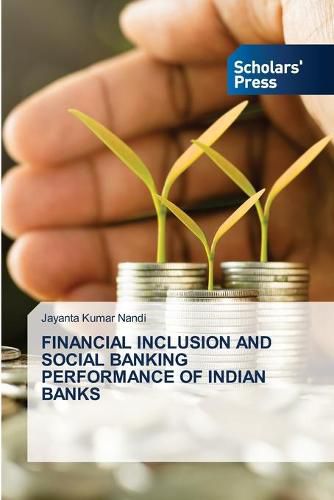Readings Newsletter
Become a Readings Member to make your shopping experience even easier.
Sign in or sign up for free!
You’re not far away from qualifying for FREE standard shipping within Australia
You’ve qualified for FREE standard shipping within Australia
The cart is loading…






This title is printed to order. This book may have been self-published. If so, we cannot guarantee the quality of the content. In the main most books will have gone through the editing process however some may not. We therefore suggest that you be aware of this before ordering this book. If in doubt check either the author or publisher’s details as we are unable to accept any returns unless they are faulty. Please contact us if you have any questions.
Since decades the Indian public and private sector banks have played a vital role in giving direction to economic growth process by taking money as deposits and lending that money as loans and advances to different priority and non-priority sectors of the economy. But credit management has become the major challenges for Indian banks. Because mounting the level of NPAs are adversely affecting the profitability, liquidity and solvency positions for the bankers and the economic growth for the society. So this situation creates a tough competition between the Indian public and private sector banks to control the level of NPAs by enhancing the performance of credit recovery management to keep up their existence in the competition and at the same time to increase the social responsibility to accelerate the economic growth and to fulfill their social obligations. In this backdrop a comparative study has been made among the selected public and private sector banks in India with the help of relevant ratios and statistical tools during the period 2004-05 to 2015-16. Selection of the banks for this study has been made on the basis of their total income and balance sheet size.
$9.00 standard shipping within Australia
FREE standard shipping within Australia for orders over $100.00
Express & International shipping calculated at checkout
This title is printed to order. This book may have been self-published. If so, we cannot guarantee the quality of the content. In the main most books will have gone through the editing process however some may not. We therefore suggest that you be aware of this before ordering this book. If in doubt check either the author or publisher’s details as we are unable to accept any returns unless they are faulty. Please contact us if you have any questions.
Since decades the Indian public and private sector banks have played a vital role in giving direction to economic growth process by taking money as deposits and lending that money as loans and advances to different priority and non-priority sectors of the economy. But credit management has become the major challenges for Indian banks. Because mounting the level of NPAs are adversely affecting the profitability, liquidity and solvency positions for the bankers and the economic growth for the society. So this situation creates a tough competition between the Indian public and private sector banks to control the level of NPAs by enhancing the performance of credit recovery management to keep up their existence in the competition and at the same time to increase the social responsibility to accelerate the economic growth and to fulfill their social obligations. In this backdrop a comparative study has been made among the selected public and private sector banks in India with the help of relevant ratios and statistical tools during the period 2004-05 to 2015-16. Selection of the banks for this study has been made on the basis of their total income and balance sheet size.